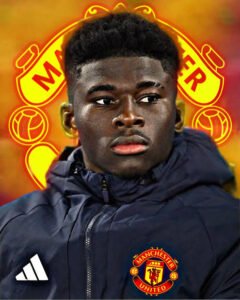
In a surprising turn of events at the Brussels Diamond League, Sha’Carri Richardson’s decision has sent shockwaves through the athletics world, particularly after a disappointing performance in the 100 meters. Known for her blazing speed and bold personality, Richardson’s recent choice has stirred considerable debate among fans, analysts, and fellow athletes.

Richardson’s 100m race at the Brussels Diamond League did not go as planned. The American sprinter, who has often been a front-runner in the sprinting world, struggled to find her rhythm and finished far below her usual standards. This unexpected result left many questioning her form and future performance.
What followed the race, however, was even more astonishing. Richardson announced her decision to withdraw from the remainder of the meet, including the 200 meters, a race she had been set to compete in. This move was particularly unexpected given her high profile and the fact that such events typically serve as key opportunities for athletes to showcase their skills and gain momentum heading into major championships.
In her post-race interview, Richardson expressed frustration and disappointment with her performance, but her decision to withdraw was framed as a strategic move rather than an emotional reaction. She explained that she wanted to focus on regrouping and re-evaluating her training and preparation. According to Richardson, the goal was to avoid further strain and to return to her best form for future competitions, rather than risking further underperformance.
The reaction to Richardson’s decision has been mixed. On one hand, some commentators and fans have praised her for taking a proactive approach to address her issues rather than competing under less-than-ideal conditions. This viewpoint highlights the importance of mental and physical well-being in high-stakes sports and supports the idea that sometimes stepping back can be beneficial for long-term success.
On the other hand, there is disappointment among fans and stakeholders who were eager to see Richardson compete in the 200 meters, a race that could have provided a chance for redemption and a platform to showcase her resilience. Critics argue that withdrawing from the meet could be seen as a missed opportunity, particularly in a competitive season where every race counts towards ranking and momentum.
Richardson’s decision also places a spotlight on the pressures athletes face in high-profile events. The scrutiny and expectations can be overwhelming, and the decision to withdraw underscores the challenging balance between maintaining peak performance and managing personal and professional stress. It also raises questions about the role of support systems and how athletes cope with setbacks.
As the athletics community reflects on this incident, it is clear that Richardson’s decision has sparked important conversations about the nature of competition and the realities athletes face. Whether this choice will ultimately benefit her career remains to be seen, but it serves as a reminder of the complexities involved in high-level sports.
Looking forward, fans and analysts will be keenly watching how Richardson rebounds from this setback. Her future performances will be closely scrutinized, and the impact of this decision will likely be a topic of discussion in the lead-up to upcoming championships. In the meantime, Richardson’s choice to withdraw from the Brussels Diamond League stands as a bold and contentious moment in her athletic journey, reflecting the often unpredictable nature of elite sports.






